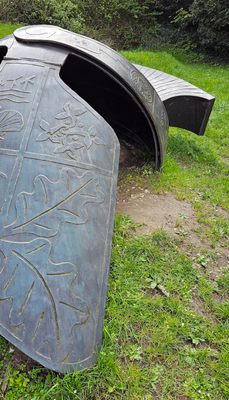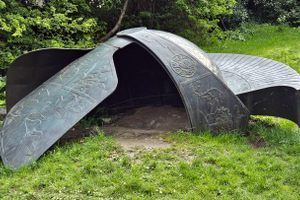About
The Roman Empire colonized much of Great Britain and founded many settlements that have become modern British cities. Even today, many Roman archaeological sites can be found across the island. However, very few British locations seem to identify so closely with Roman history as Prestatyn.
From sometime after the Roman military came to Great Britain in the year 43 to the early fourth century, a small settlement existed in Prestatyn with connections to other nearby Roman settlements, including Wrexham and Dewa (modern-day Chester). The purpose of the settlement was unclear, but it may have functioned as a harbor for nearby lead and silver mines. What happened to the settlement after the Roman Empire withdrew from Great Britain in 410 is also unclear, but it seems that the settlement disappeared and that the modern town of Prestatyn was founded centuries later.
Prestatyn’s Roman past remained buried underground until 1934, when local architect, surveyor, and amateur archaeologist F. Gilbert Smith discovered the remains of a Roman bathhouse in the hills inland from the city center. Excavations and studies in the decades that followed unearthed the foundations of the bathhouse and several other structures as well as many other Roman artifacts. The area around the Roman bathhouse is now a park.
All of this archaeological activity gave the small town, which was otherwise one of many beachside getaways along the coast of North Wales, a distinct identity. Locals came to associate their town with Roman history, even though the Roman settlement’s place in Roman history was relatively minor.
In 2007, Denbighshire County Council decided to install a sculpture to sit at the beginning of Offa’s Dyke Path (a path along the former demarcation between the medieval kingdom of Mercia and Wales) in the hills above the city, even though the path technically ends at the ocean. The council commissioned the company Cod Steaks, which had designed props for Wallace and Gromit films, to design and construct the sculpture. They decided to create a Roman helmet, as it seemed to be closely linked with the town’s local heritage and identity. The company also consulted with pupils from Prestatyn High School about the design and incorporated some of their suggestions into the sculpture, including, most notably, the oak leaves on the side of the helmet.
The 3.5-meter-long helmet was installed in Hillside Park in May 2009. The sculpture now serves either as a marker for where people can begin the 177-mile (285 km) journey to the south along Offa’s Dyke Path or as a final reward for people who have completed the journey walking from the south.
Related Tags
Know Before You Go
The Roman Helmet is located at the lower end of Hillside Gardens where Mount Ida Road intersects with another street named Fforddlas. The park is easily reached by car from Prestatyn, which itself is well-connected by road with other locations along the North Wales coast.
Additionally, the park is within a 15-minute walk of the town’s bus and train stations. The site is open at all times of day, and, except for the potentially steep grade of the pathway, the site is wheelchair accessible.
Published
June 5, 2024
Sources
- https://www.nationaltrail.co.uk/en_GB/trails/offas-dyke-path/
- https://www.dailypost.co.uk/news/local-news/roman-helmet-artwork-unveiled-prestatyn-2788961
- https://www.thebeacheshotel.com/attractions/roman-helmet-prestatyn/
- http://news.bbc.co.uk/1/hi/wales/north_east/8016156.stm
- https://www.walesonline.co.uk/news/wales-news/well-gromit-its-big-roman-2114257
- https://www.mythslegendsodditiesnorth-east-wales.co.uk/prestatyn
- https://coflein.gov.uk/en/site/407581/
- https://coflein.gov.uk/en/site/306722/
- https://www.roman-britain.co.uk/places/prestatyn/
- https://chesterwalls.info/baths.html






















